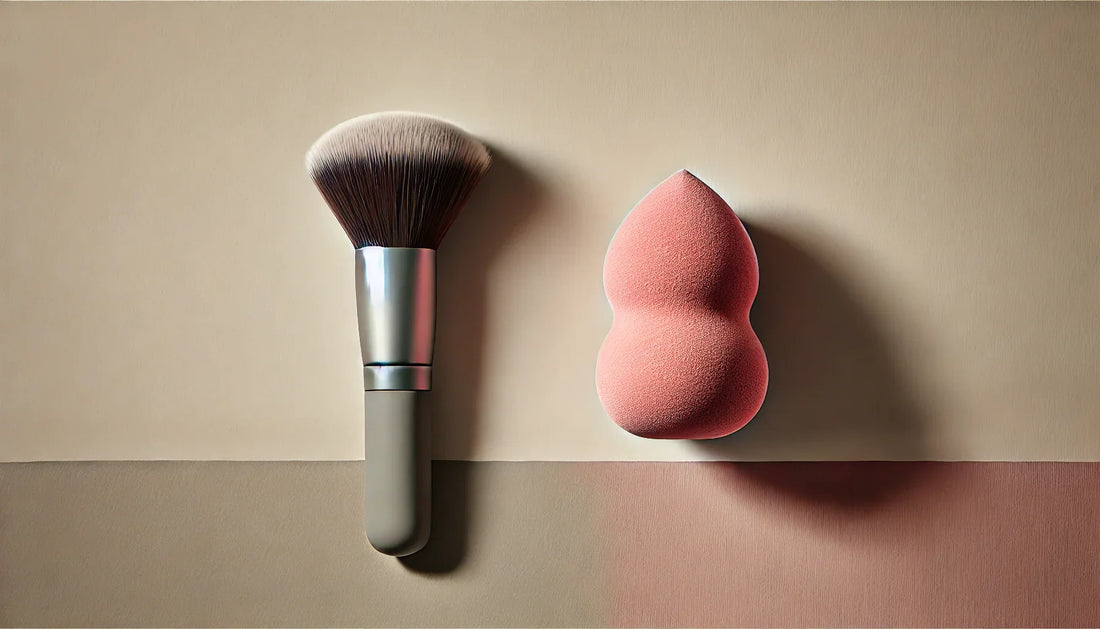
Makeup Sponges VS Brushes
When it comes to applying makeup, two tools stand out as essential in many beauty routines: makeup sponges and brushes. Both have their own advantages and disadvantages, and the choice between the two largely depends on the desired finish, texture, and application technique. Understanding the differences between makeup sponges and brushes is key to achieving a flawless look, whether for everyday wear or a special occasion.
Makeup brushes have been a staple in the beauty industry for decades, and they come in various shapes, sizes, and bristle types. Brushes are known for their versatility and precision. They can be used for a variety of products, including foundation, blush, bronzer, eyeshadow, and highlighter. A well-made makeup brush can provide a smooth, even finish, and it allows for a controlled application. Brushes with dense, synthetic bristles, such as flat foundation brushes or stippling brushes, are ideal for applying liquid and cream foundations, as they help spread the product evenly across the skin. Powder brushes, on the other hand, are often larger and more fluffy, making them great for setting powder or applying loose pigments.
One of the main benefits of makeup brushes is their ability to create a polished, airbrushed look. Brushes can be used to build layers of product gradually, which helps avoid a cakey or overly heavy appearance. They allow for precision, especially when applying products to smaller areas like the eyes or around the nose. Additionally, brushes tend to be more hygienic because they do not absorb as much product as sponges do, and they are easier to clean and maintain if cleaned regularly. Brushes are also reusable for an extended period, as long as they are taken care of properly.
However, makeup brushes can sometimes leave streaks on the skin, particularly if the product is not blended properly. This can be avoided with the right technique and the right kind of brush, but it does require some skill. Brushes can also be expensive, especially high-quality ones, and they require regular cleaning to ensure that they remain effective and free from bacteria. For those who prefer a faster, more hands-on application method, brushes may not be as efficient or convenient as sponges.
Makeup sponges, on the other hand, have become increasingly popular due to their ability to deliver a natural, dewy finish. A sponge, when used damp, can help blend foundation seamlessly into the skin, creating a soft, airbrushed effect. The dampness of the sponge ensures that less product is absorbed, meaning that more of the product remains on the skin for a fuller coverage. This makes makeup sponges ideal for liquid foundations, concealers, and other creamy products, as they provide a flawless, seamless finish that looks very natural.
One of the most notable advantages of makeup sponges is their ability to blend makeup effortlessly. When used in a gentle, tapping motion, the sponge creates a smooth, even finish without streaks. The sponge also tends to help products melt into the skin, giving it a more hydrated and fresh appearance. For people with dry skin, the sponge’s ability to build up coverage without causing the product to settle into fine lines or dry patches can be particularly beneficial.
Another perk of makeup sponges is their ability to create a dewy, glowing finish. The sponge’s soft, pliable texture works well for blending both liquid and cream products, ensuring a smooth, radiant finish. The versatility of a sponge is also worth noting; it can be used for a range of applications, from foundation to concealer, highlighter, and even baking under the eyes. Sponges are often more affordable than brushes, and many beauty brands offer high-quality options at accessible price points.
On the downside, makeup sponges can be more difficult to clean than brushes. Since they absorb liquid products, they tend to retain more product and can harbor bacteria if not washed regularly. This makes it essential to clean the sponge after each use to avoid skin irritations or breakouts. Sponges also need to be replaced more frequently than brushes, as they can wear out or tear with time. Additionally, some people find the application process with a sponge to be slower, as the tapping motion can take more time than using a brush.
Ultimately, whether you prefer makeup sponges or brushes comes down to personal preference and the look you're trying to achieve. Brushes excel at providing precision and a flawless, airbrushed finish, while sponges are perfect for creating a natural, dewy look with seamless blending. For some, the best approach might be to incorporate both tools into their makeup routine, using brushes for certain products and sponges for others. In the end, each tool offers unique advantages that can help create a variety of stunning makeup looks.
